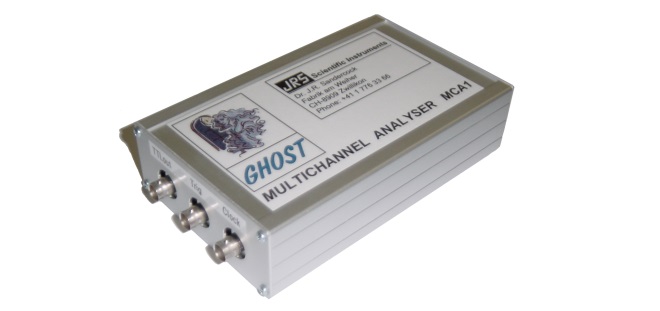
Multichannel Analyser MCA-1

Description
The light analysed by a spectrometer such as the Tandem Interferometer is measured by a suitable light detector. For maximum sensitivity the detector is normally a photomultiplier used in a single photon counting mode. The output from the photon counter is a random series of short TTL pulses, each pulse corresponding to a detected photon. In order to record a spectrum the spectrometer is scanned while at the same time counting the pulses in successive finite time intervals into an array of digital data channels. The spectrum thus appears as a histogram in which the number of counts in a channel corresponds to the intensity at that spectral interval. This array of data channels is known as a multichannel analyser (MCA).
When recording very weak signals a very long recording time may be needed in order to count a sufficient number of photons. For an instrument like the Tandem Interferometer long single scans are not possible because the instrument will drift out of alignment. In this case repetitive scanning is used in order to reach long recording times. During each scan the detected photons in a given spectral interval are counted into the same data channels, and so the recorded intensity slowly builds up with time.
The GhostMCA performs the above recording functions, and is optionally added to the TFP interferometers control unit hardware. The stored data is read into a standard IBM compatible computer via an RS-232 port. Software is provided for data gathering, visualisation and storage and basic operation of the system. The software can be freely downloaded from the links at the end of this page.
For older control units, sold without the required MCA hardware, an external MCA box is available (as shown in the picture).




